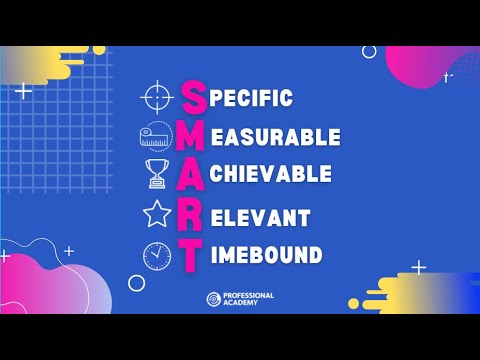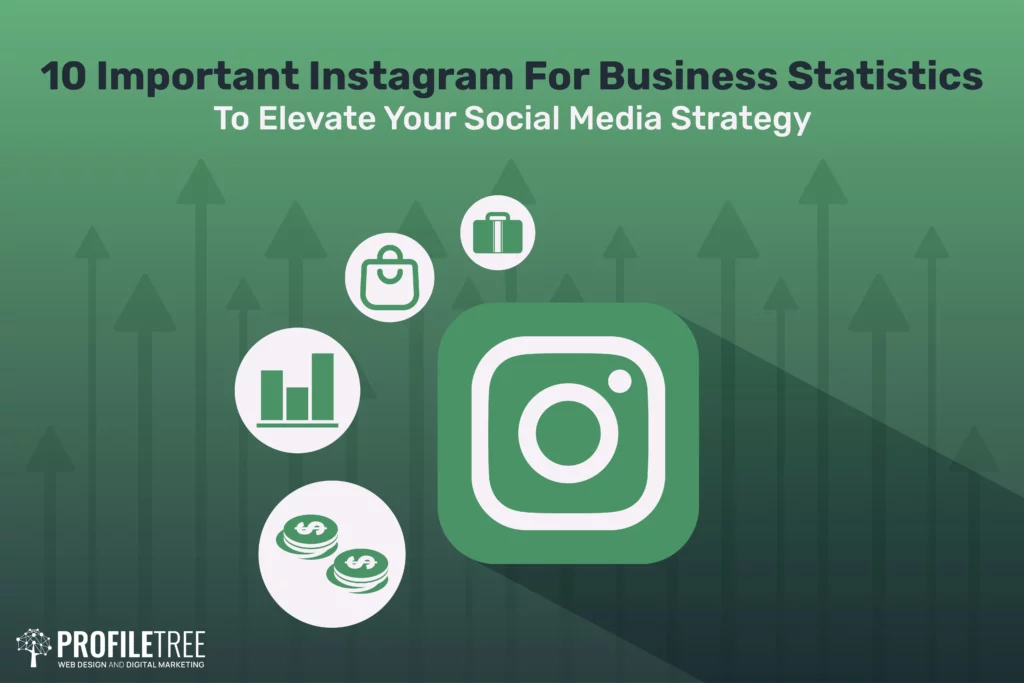What is social media strategy? When you’re launching a business, dealing with social media on the fly can be tempting. But your social media ‘shop window’ deserves more…and can do so much more for your company.
In digital marketing, a social media strategy stands as a carefully crafted roadmap for utilizing social media platforms to achieve specific business objectives. It serves as a comprehensive plan that guides organizations in harnessing the power of social media to connect with their target audience, enhance brand awareness, foster engagement, and ultimately drive measurable results.
A well-defined social media strategy goes beyond simply posting content on various platforms. It involves a deep understanding of the target audience, a clear alignment with the overall business goals, and a meticulous selection of social media platforms that resonate with the target demographic. It encompasses various elements, including:
- Defining SMART Goals: Establishing clear, specific, measurable, achievable, relevant, and time-bound objectives that align with the overall business strategy.
- Target Audience Analysis: Conducting thorough research to understand the demographics, interests, online behavior, and social media preferences of the target audience.
- Social Media Platform Selection: Identifying the most suitable social media platforms based on the target audience’s preferences, industry trends, and platform-specific strengths.
- Content Strategy Development: Crafting a content plan that aligns with the target audience’s interests, resonates with the brand’s identity, and effectively conveys the desired messages.
- Community Engagement: Fostering meaningful interactions with the target audience by responding to comments, participating in discussions, and addressing concerns promptly.
- Social Media Analytics: Regularly monitoring and analyzing social media performance metrics to track progress, identify areas for improvement, and optimize the strategy accordingly.

Table of Contents
What is Social Media Strategy?
Done is Better Than Perfect
If you’re new to social media, you likely wonder, “What should a social media strategy look like?”
It is normal to feel like you don’t know what you’re doing at first, and the most important thing you can do is simply start posting.

Don’t get caught in the cycle of wondering if your posts are good enough, or trying to figure out Facebook algorithms (they’re constantly changing so rather than starting perfectly, the key is simply to start).
Keep it simple- photos showing who you are and what you do will give your audience a peek at what you do behind the scenes, and will begin to build trust in you as a business owner.
BUT finer points of social media algorithms, landing pages and more await but all in good time. And this is where your strategy – with factors including audience, results, original content and calls to action – will be needed and will fall into place.
Post Consistently
The best social media posting strategy is simply to be consistent. Facebook and Instagram both will reward you by showing your posts to a larger audience when you post regularly.
It’s easy to post a lot one day, and then not at all the next day, but you’re shooting your business in the foot by doing this.
Get in the habit of constantly taking pictures of the human side of your business and colleagues at work, then saving those photos for a day when you don’t have as much going on.
Set a precedent for yourself- posting twice a day, three times a day- whatever works for you- and then stick to it. Your audience will get used to seeing you post and will look forward to seeing what your business is up to each day.
Once you post consistently, it’s time to begin looking at paid advertising on social media, but it’s important to ensure that you first have built an audience. Your audience will start to grow at least a little through consistent posting.
Know Your Audience
It’s key that you tailor your posts to your audience, and it’s important that you know who you are trying to reach.
Appealing to the values of your audience is an important way to build trust and start a virtual relationship – your strategy will include a target customer ‘persona’ to help visualise this.
Interact
You might think that once your post is up, you’re done with social media for the day, but nothing could be further from the truth. Interaction is key.
You’ll want to make sure you’re at the very least liking the comments on your posts. Ideally, you’ll want to respond to each comment in a thoughtful, conversational way.
Keeping the conversation going will help your audience realise that there’s a real person behind your business, and they’ll know that if you’re there for them in social media posting, you’ll be there for them when they choose to use your business.
It’s also key to check your messages daily and respond promptly. A good rule of thumb is to respond to all messages ASAP when you can. Also, to absolutely not let any messages sit in your inbox unanswered for more than 24 hours. Set up messenger for Facebook and Instagram on your mobile phone so that you don’t need to be at work or at a computer to respond to messages promptly.
key elements of a social media strategy, including goals, audience targeting, and optimal channel mix:

Defining SMART Goals
Every effective social media strategy starts with establishing clear, measurable, and achievable goals. These goals should align with the overall business objectives and provide a roadmap for success. SMART goals are:
- Specific: Clearly defined and focused on a specific outcome.
- Measurable: Quantifiable and trackable using relevant metrics.
- Achievable: Realistic and attainable within the defined timeframe.
- Relevant: Aligned with the overall business strategy and target audience’s needs.
- Time-bound: Set within a specific timeframe for achieving the goal.
Examples of SMART social media goals include:
- Increase brand awareness by 20% within six months.
- Generate 100 qualified leads per month through social media channels.
- Boost website traffic by 15% from social media referrals within a quarter.
- Enhance customer engagement by increasing social media interactions by 30% within a year.
Target Audience Analysis
Understanding your target audience is crucial for crafting an effective social media strategy. Conduct thorough research to gain insights into their demographics, interests, online behavior, and social media preferences. This information will help you tailor your content, messaging, and channel selection to resonate with your target audience.
Real brand examples of effective social media strategies:
1. Nike: Nike’s social media strategy is centered on storytelling and inspiration. They use their platforms to share inspiring stories of athletes, promote their latest products, and engage with their audience through interactive campaigns.
Example: Nike’s #JustDoIt campaign is one of the most iconic in social media history. The campaign encourages people to overcome challenges and achieve their goals, and it has resonated with millions of people around the world.
2. Domino’s Pizza: Domino’s Pizza has transformed its social media presence in recent years, using it to build customer relationships and improve its brand image. They respond to customer feedback promptly, address concerns transparently, and use humor to connect with their audience.
Example: Domino’s Pizza’s “Listening to Pizza Lovers” campaign was a success because it showed that they were genuinely interested in customer feedback. They used the feedback to improve their products and services, and they communicated their progress with their audience.
3. Red Bull: Red Bull’s social media strategy is all about action and adventure. They use their platforms to share adrenaline-pumping videos, highlight extreme sports, and showcase their athlete ambassadors.
Example: Red Bull’s “Stratos” campaign was a viral success because it captured the imagination of people around the world. The campaign followed Felix Baumgartner as he attempted to break the record for the highest freefall jump ever.
4. Wendy’s: Wendy’s social media strategy is known for its humor and sass. They use their platforms to engage with their audience in a fun and relatable way, and they’re not afraid to take on their competitors.
Example: Wendy’s Twitter account is known for its witty replies to customers. They often use humor to turn negative comments into positive interactions.
5. Airbnb: Airbnb’s social media strategy is about showcasing the experiences that their users can have. They use their platforms to share beautiful photos of homes around the world, tell stories of travelers, and inspire people to explore new places.
Example: Airbnb’s “Live There” campaign was a success because it showed that Airbnb is more than just a place to stay. It’s a way to immerse yourself in a new culture and experience the world like a local.
These are just a few examples of brands that are using social media effectively to achieve their business goals. By understanding your audience, setting SMART goals, and choosing the right channels, you can develop a social media strategy that will help your business grow.
Steps and tips for conducting social listening research:
1. Define your objectives:
Before diving into the data, clearly define your objectives for conducting social listening research. What do you hope to learn from this exercise? Are you trying to understand customer sentiment, identify trends, or track campaign performance? Having clear objectives will help you focus your research and gather relevant data.
2. Choose the right social media platforms:
Not all social media platforms are created equal. Different platforms have different demographics, usage patterns, and content formats. Select the platforms where your target audience is most active and where your brand is present.
3. Establish keywords and phrases:
Identify keywords and phrases that are relevant to your research topic. These could include brand mentions, product names, industry terms, and common customer pain points. Use these keywords to filter and analyze social media conversations.
4. Utilize social listening tools:
Social listening tools can help you automate data collection, analyze sentiment, and gain insights from social media conversations. Popular tools include Brand24, Sprout Social, and Hootsuite.
5. Gather and analyze data:
Once you’ve set up your social listening tools, start collecting data. Monitor social media conversations, track mentions of your brand and competitors, and analyze sentiment trends.
6. Identify key insights:
Look for patterns, trends, and recurring themes in the data. What are people saying about your brand? What are their concerns, complaints, and praises? What industry trends are emerging?
7. Draw actionable conclusions:
Translate your insights into actionable recommendations for your business. How can you improve your products, services, or marketing efforts based on the feedback you’ve gathered?
8. Monitor and adapt:
Social listening is an ongoing process. Continuously monitor social media conversations and adapt your strategy based on new insights and trends.
Additional Tips:
- Use Boolean search operators to refine your keyword searches and narrow down the results.
- Consider using sentiment analysis tools to gauge the overall tone of social media conversations.
- Look for visual trends, such as memes and hashtags, that can provide additional insights.
- Combine social listening data with other sources of information, such as customer surveys and market research, to gain a holistic understanding of your audience and market.
How to establish KPIs and measure ROI for social media marketing:
Establishing KPIs (Key Performance Indicators)
Key Performance Indicators (KPIs) are quantifiable measures that track progress towards specific goals. In the context of social media marketing, KPIs help you assess the effectiveness of your strategies and determine whether you are achieving your desired outcomes.
To establish relevant KPIs, consider your overall social media goals. Are you aiming to increase brand awareness, drive website traffic, generate leads, or boost sales? Once you have identified your goals, select KPIs that align with those objectives.
Common Social Media Marketing KPIs:
- Brand Awareness:
- Reach: The number of unique users who saw your content.
- Impressions: The total number of times your content was displayed.
- Engagement Rate: The percentage of users who interacted with your content (likes, comments, shares).
- Website Traffic:
- Click-Through Rate (CTR): The percentage of users who clicked on a link in your content.
- Referral Traffic: The number of visitors who came to your website from social media.
- Lead Generation:
- Form Submissions: The number of users who filled out a form on your website or social media page.
- Cost per Lead (CPL): The average cost of acquiring a lead through social media.
- Sales:
- Conversion Rate: The percentage of website visitors who made a purchase.
- Social Media-Driven Revenue: The total revenue generated from social media referrals.
Measuring ROI (Return on Investment)
Return on Investment (ROI) is a measure of the profitability of an investment. In social media marketing, ROI indicates how much revenue you are generating from your social media efforts compared to the costs you are investing.
To calculate ROI, use the following formula:
ROI = (Revenue from Social Media - Cost of Social Media) / Cost of Social Media x 100
For example, if you generated $10,000 in revenue from social media and your total cost of social media marketing was $2,000, your ROI would be 400%. This means that for every $1 you invested in social media, you generated $4 in revenue.
Measuring ROI Effectively:
- Set Clear Goals: Define specific and measurable goals for your social media marketing efforts.
- Track Relevant Metrics: Use appropriate KPIs to measure progress towards your goals.
- Establish a Baseline: Track your performance metrics before implementing any new social media campaigns or strategies. This will help you establish a baseline to compare your results against.
- Use Attribution Tools: Utilize attribution tools to track the source of your website traffic and conversions. This will help you determine the impact of your social media efforts on your bottom line.
- Consider Indirect Benefits: Social media can also provide indirect benefits, such as brand reputation enhancement and customer engagement. While these benefits may not be directly measurable in terms of ROI, they can still contribute to the overall success of your business.
What is Social Media Strategy? FAQ
Q: What are KPIs (Key Performance Indicators)?
KPIs are quantifiable measures that track progress towards specific goals. In social media marketing, KPIs help you assess the effectiveness of your strategies and determine whether you are achieving your desired outcomes.
Q: What are some common social media marketing KPIs?
Some common social media marketing KPIs include:
- Brand Awareness: Reach, impressions, engagement rate
- Website Traffic: Click-through rate (CTR), referral traffic
- Lead Generation: Form submissions, cost per lead (CPL)
- Sales: Conversion rate, social media-driven revenue
Q: What is ROI (Return on Investment)?
ROI is a measure of the profitability of an investment. In social media marketing, ROI indicates how much revenue you are generating from your social media efforts compared to the costs you are investing.
Q: How do I calculate ROI for social media marketing?
You can calculate ROI using the following formula:
ROI = (Revenue from Social Media - Cost of Social Media) / Cost of Social Media x 100
Q: How do I measure ROI effectively?
To measure ROI effectively, you should:
- Set clear goals
- Track relevant metrics
- Establish a baseline
- Use attribution tools
- Consider indirect benefits
What is Social Media Strategy? Summary
The social media world is constantly changing, and it’s important to regularly spend time reviewing your social media strategy. Or, better still have an agency with working expertise in the very latest methods and developments, draw up your plan.
Measuring your social media strategy is not always easy, but both Facebook and Instagram provide analysis tools that will allow you to see if you are moving in the right direction.
Troubleshooting is key- if one approach isn’t working, try another. If text isn’t getting you what you want, try photos.
If photos aren’t working, try videos. If videos aren’t working, try using live or story features. Since social media evolves almost daily, it’s key that you do the same.
No matter how social media changes, the keys remain the same- staying honest, staying vulnerable, and interacting with your audience on a constant basis will build your business.
Unmissable BUSINESS and STRATEGY guides… Goals and objectives | Fair Use Laws | Copyright VS Trademark | Product Liability | Business News Articles | Snapchat for Business
Our QUICK READ What Is series… Google my Business | Facebook | App | Keyword Research | SEO | Google+ | Domain Authority | Lead Magnet | Hootsuite | Twitter | Twitter Handle | Facebook Live | Hashtag | Guerilla Marketing | Snapchat Geofilter


